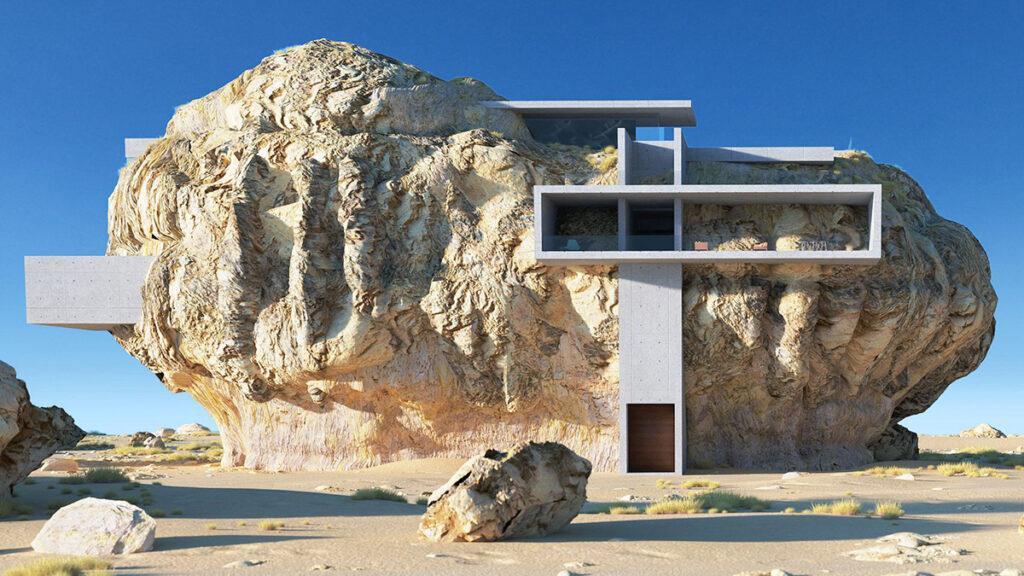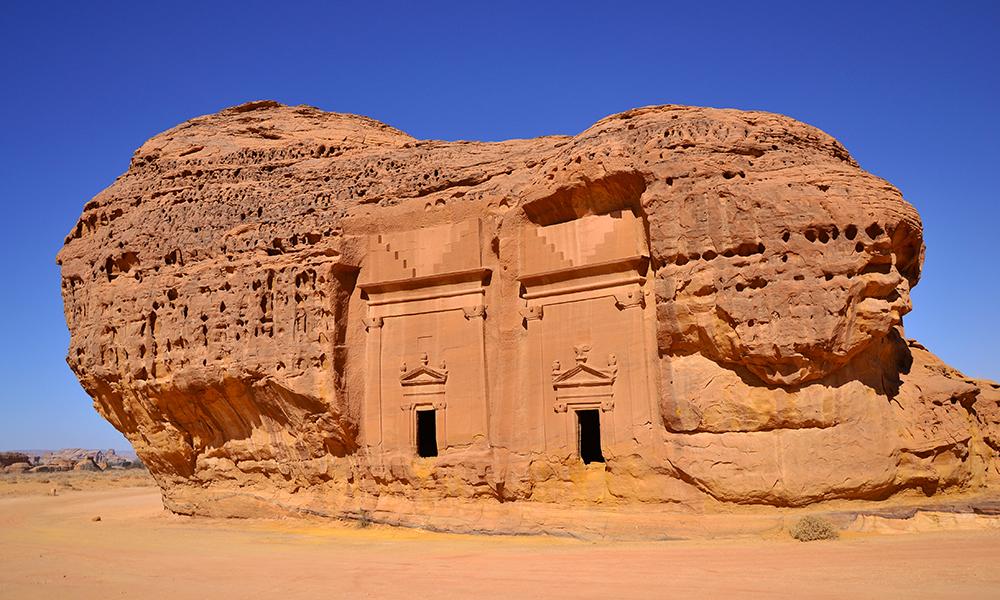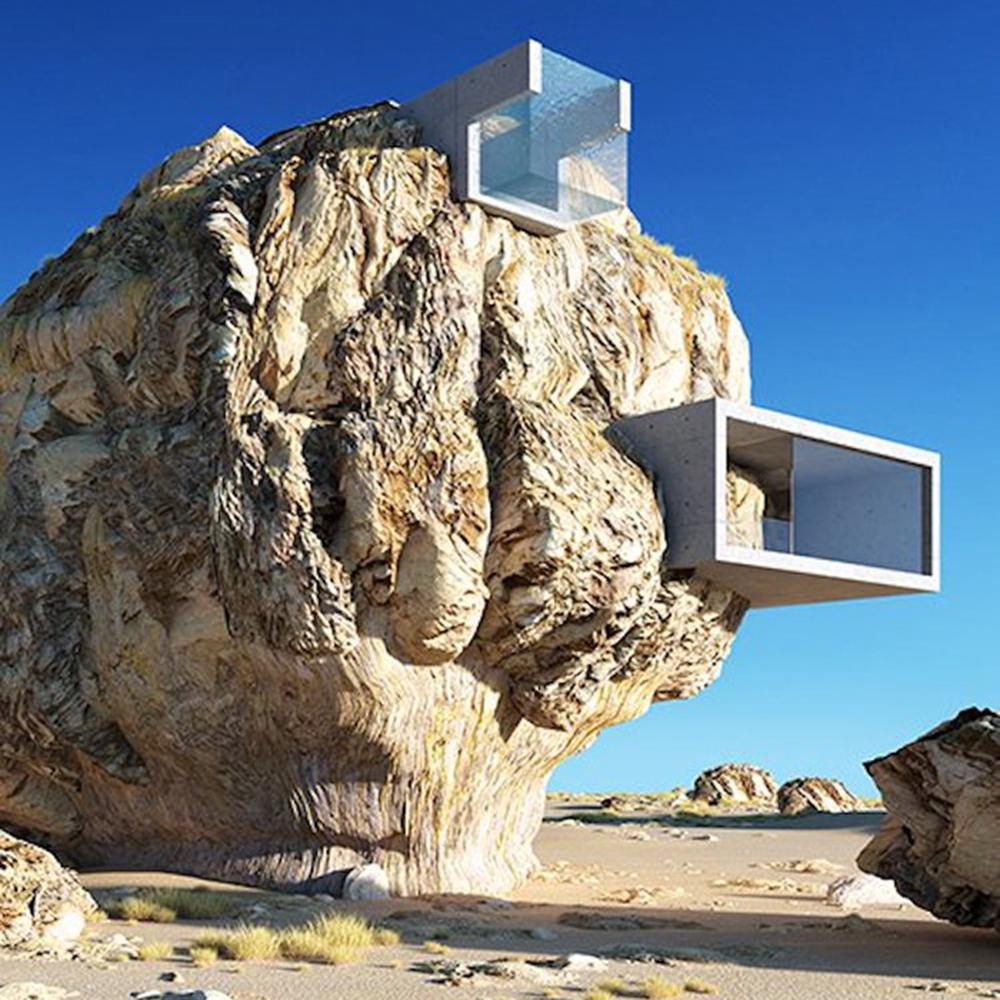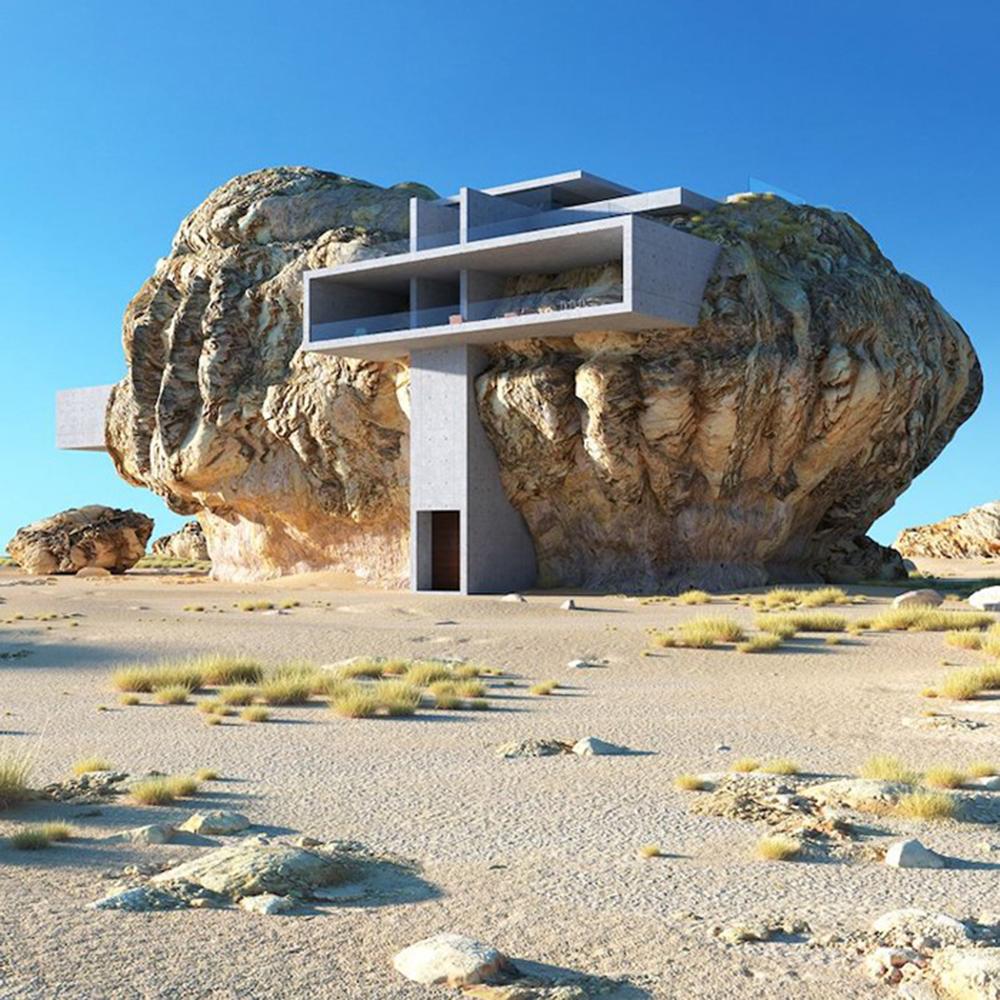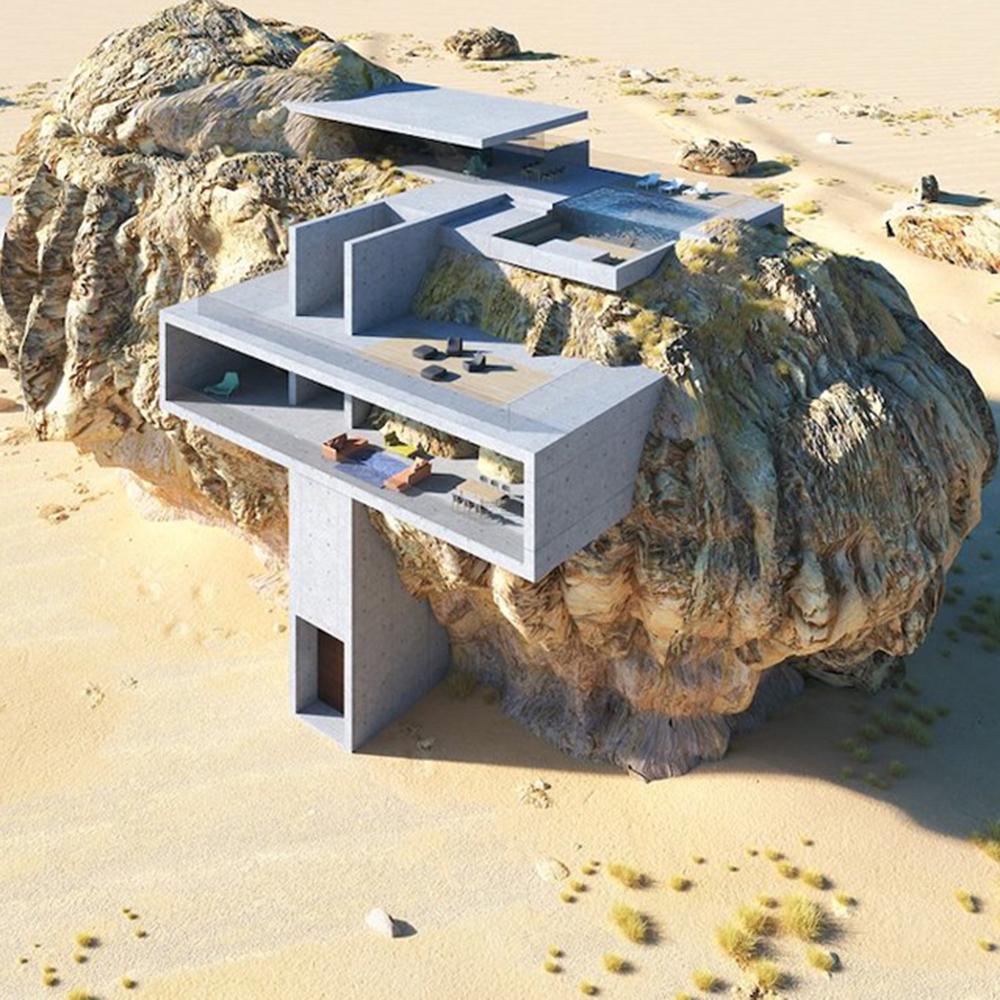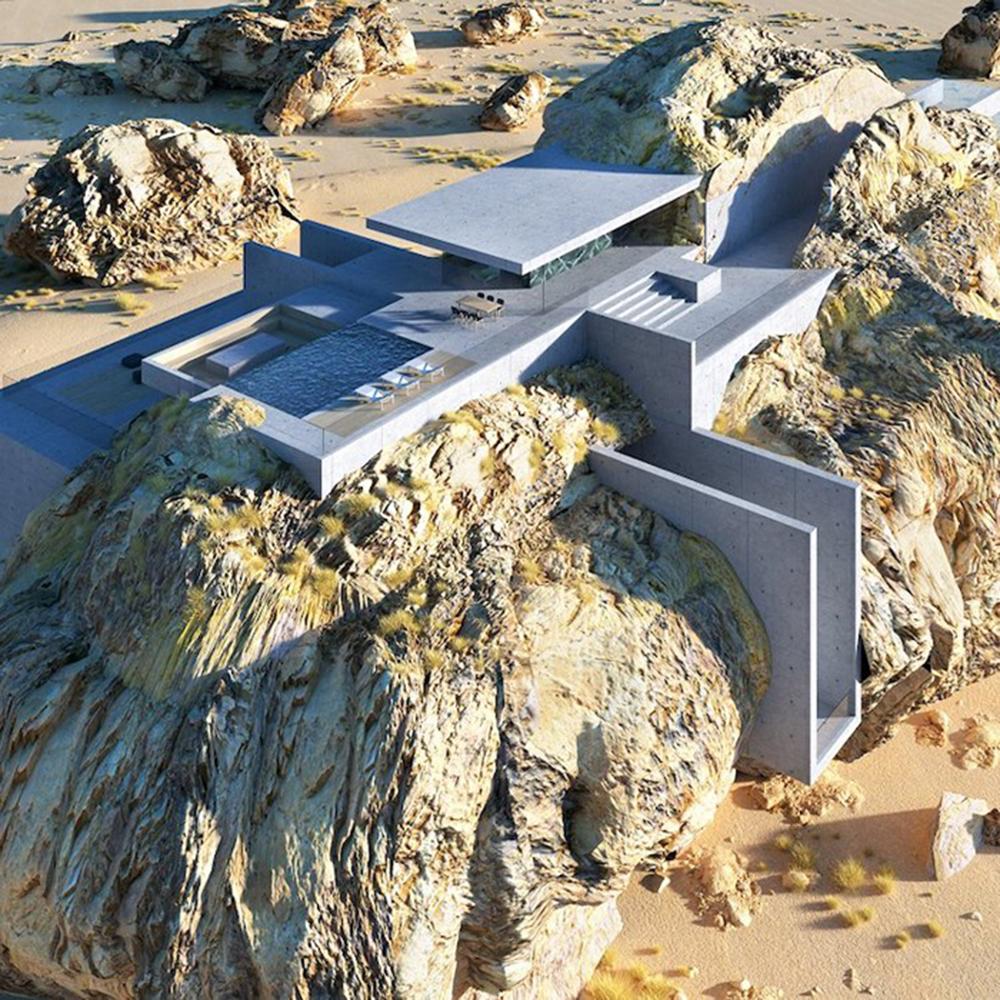Set in stone
Architect Amey Kandalgaonkar is currently attracting international attention with his “House Inside a Rock”. Although that’s not so surprising, given that he has transformed a giant stone into an enormous building! Admittedly it’s only on his computer for the time being…
Deep in the Saudi Arabian desert, there are exactly 131 spectacular rock-cut tombs protruding out of the sand. Madâin Sâlih is the name given to this site where the commercial metropolis of Hegra once held sway. Legend has it that the Prophet Salih once attempted to convert the city’s residents to Islam. When he failed, an earthquake was sent to punish the unbelievers. Which gave their home its modern name Madâin Sâlih – City of Salih.
Tombs – like houses in rocks
In any case, the colossal stone tombs were a spectacular sight that rendered Shanghai-based architect and architecture photographer Amey Kandalgaonkar speechless. Monumental structures. Like houses in rocks. And a mystic atmosphere. The images were imprinted on his mind.
As Amey Kandalgaonkar explains: “There is a huge amount of architectural heritage laid out for us by past builders and I believe they did a great job of integrating built environments in natural elements.” In his eyes, the people who built this site were true master craftsmen and an inevitable source of great inspiration.
House Inside a Rock
This prompted the architect, who specializes in 3D renderings, to design a private house using these new impressions. As with the aforementioned desert tombs, the house would be full of surprises. One that does not grow out of a rock – like tree houses among the treetops – but rather that cuts through the natural stone like a scalpel.
As he explains today: “Considering the visual complexity of the rocks at Mada’in Salih, it was imperative to use simple planes and cubes in order to achieve a visual balance.” However, before he could go any further, he still needed to find the perfect rock.
As if by magic
However, because this proved to be virtually impossible, Kandalgaonkar reached for his bag of tricks – and built the rock himself using his own 3D software! “That in itself was a sculpting process,” he recalls with a chuckle, adding: “Later when inserting the house into this rock, I tried to keep its visual impact from eye level as minimal as possible.” It is only when you see the structure from a bird’s eye perspective that you realize just how much it has been integrated into the rock.
Then, and only then, do you see the monumental entry shaft that combines the ground floor with a wide, rectangular living space that is open to the air on the outside. With raw concrete panels nestling closely against rocky protrusions.
A terrace overlooks the cubic space, leading to a higher row of terraces and a swimming pool, which is located at the tip of the rocky protrusion next to a shady penthouse area. This particular terrace leads along the top of the rock to another swimming pool with glass walls and a floor that protrudes over the edge of the rock.
Considering the visual complexity of the rocks at Mada’in Salih, it was imperative to use simple planes and cubes.
Amey Kandalgaonkar, architect
By juxtaposing the rock’s raw texture with the smooth concrete surface, Kandalgaonkar conjures up a complex visual contrast in which old and new bring out the best in each other. However, it is unlikely that this design will ever actually be built.
Nothing is set in stone
Nonetheless, Amey Kandalgaonkar stresses that this startling concept is firm proof of the latent artistic potential of architecture. After all, regardless of the scope of a plan or concept, its real-life application will never be set in stone…
Text: Johannes Stühlinger
Translation: Rosemary Bridger-Lippe
Images: Amey Kandalgaonkar; Wikipedia
